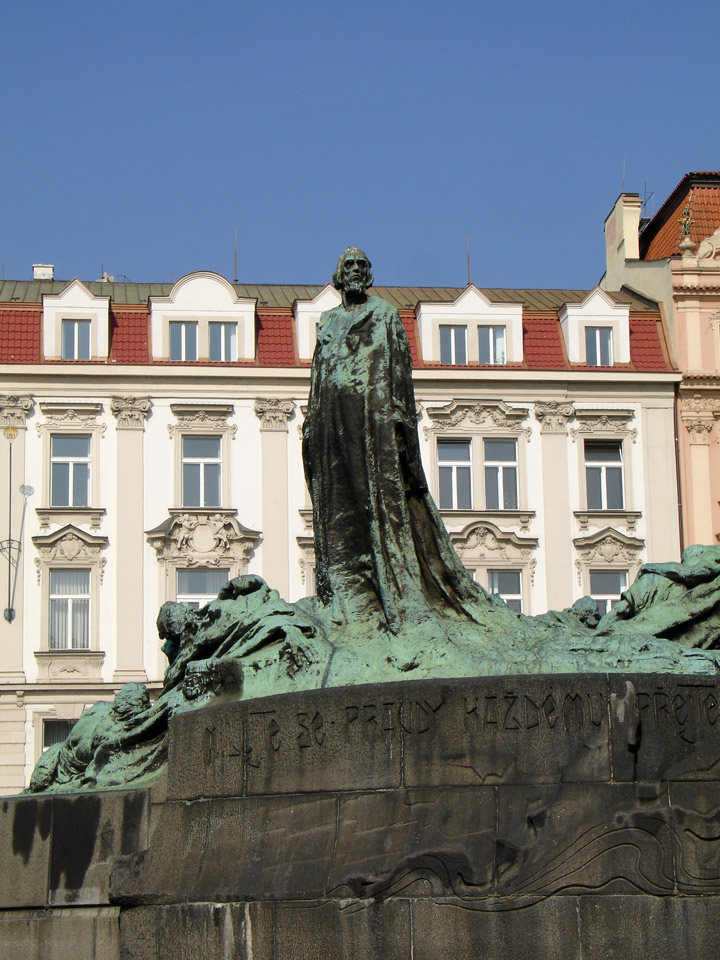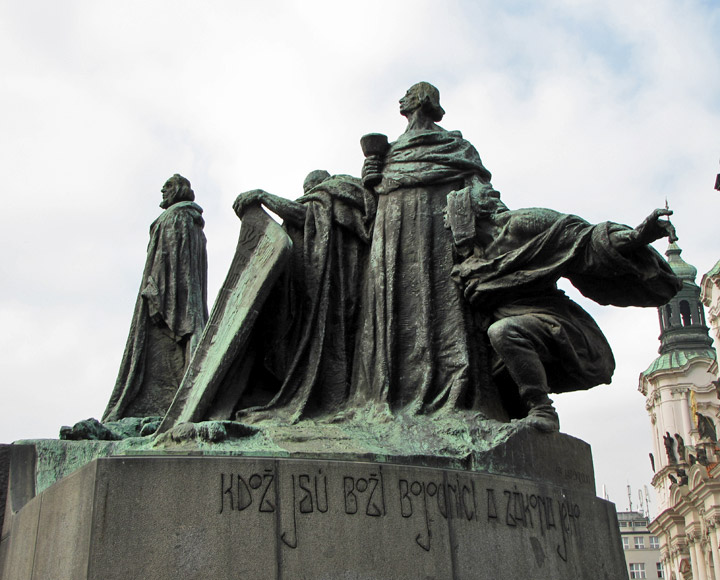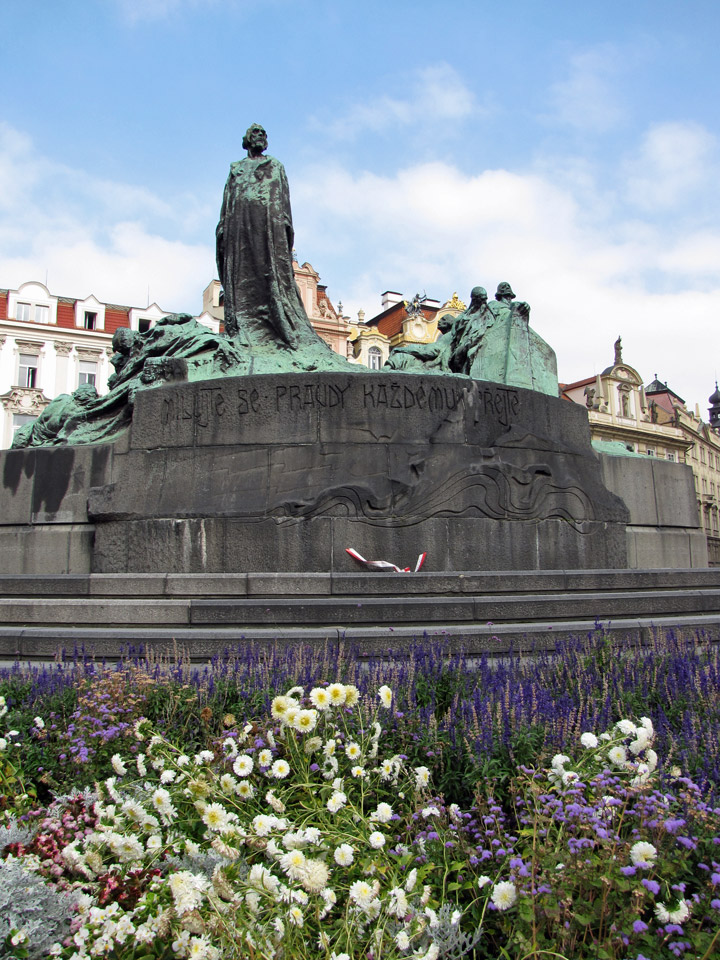

Church of Our Lady before Tın

Church of Our Lady on Old Town Square
The Church of Our Lady before is a dominant feature of the Old Town of Prague, Czech Republic, and has been the main church of this part of the city since the 14th century. The church's towers are 80 m high and topped by four small spires.
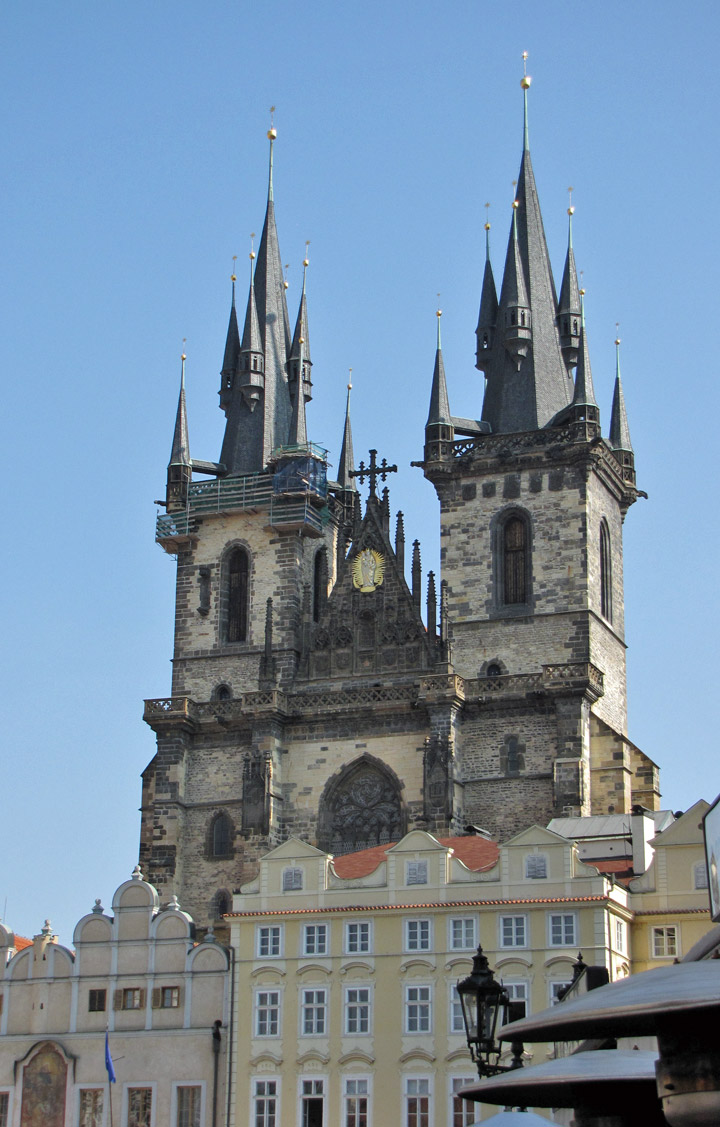
In the 11th century, this area was occupied by a Romanesque church, which was
replaced by an early Gothic Church of Our Lady in front of Tın in 1256.
Construction of the present church began in the 14th century in late Gothic
style under the influence of Matthias of Arras and later Peter Parler. By the
beginning of the 15th century, construction was almost complete; only the
towers, the gable and roof were missing. The church was controlled by Hussites
for some time, including John of Rokycan, future archbishop of Prague, who
became the church's vicar in 1427.
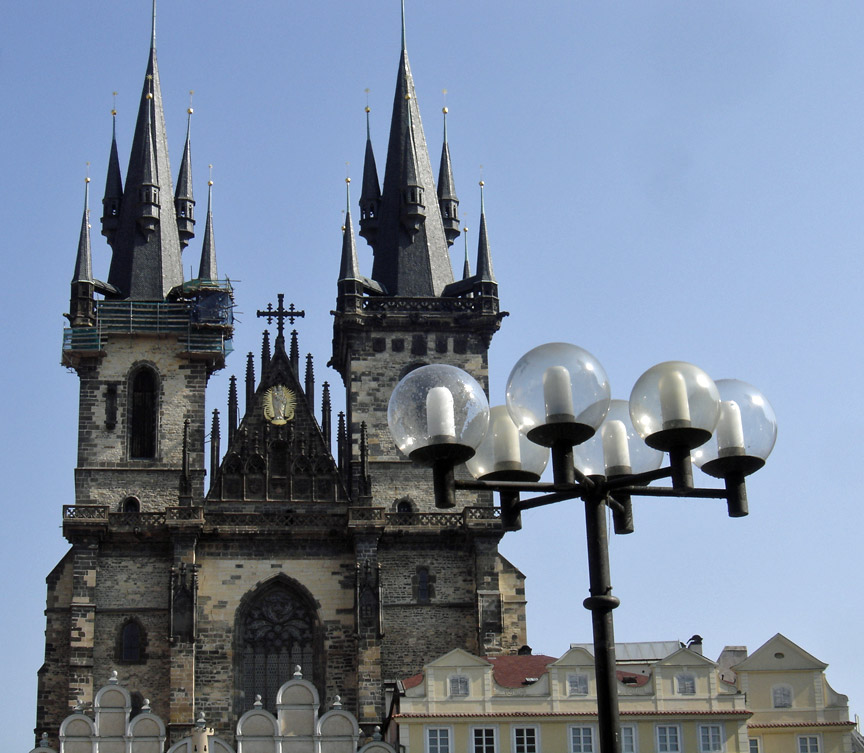
The roof was completed in the 1450s, while the gable and northern tower were
completed shortly thereafter during the reign of George of Podebrady. His
sculpture was placed on the gable, below a huge golden chalice, the symbol of
the Hussites. The southern tower was not completed until 1511, under Matěj
Rejsek. In 1626, after the Battle of White Mountain, the sculptures of George of
Podebrady and the chalice were removed and replaced by a sculpture of the Virgin
Mary, with a giant holy made from by melting down the chalice. In 1679 the
church was struck by lightning, and the subsequent fire heavily damaged the old
vault, which was later replaced by a lower baroque vault.
Text from Wikipedia
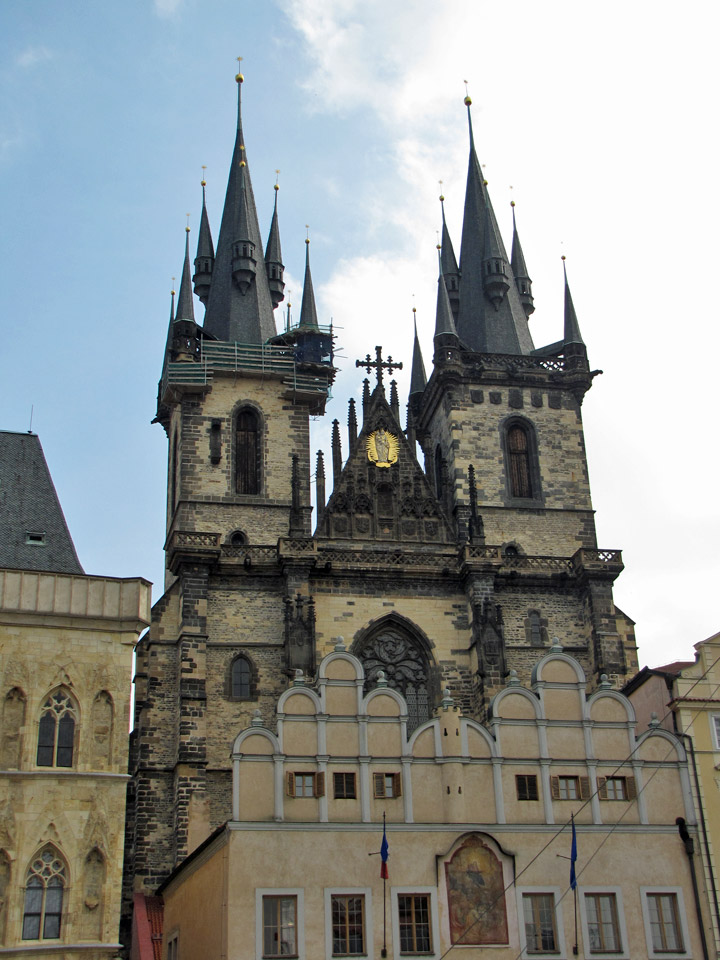
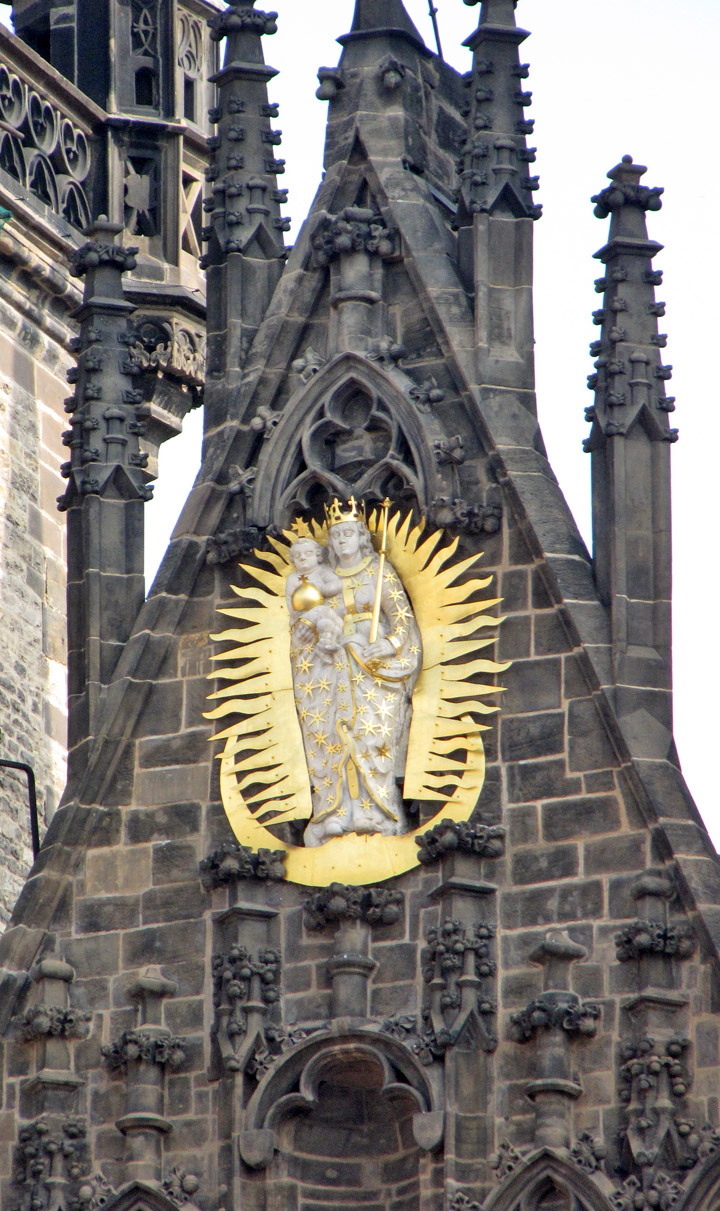
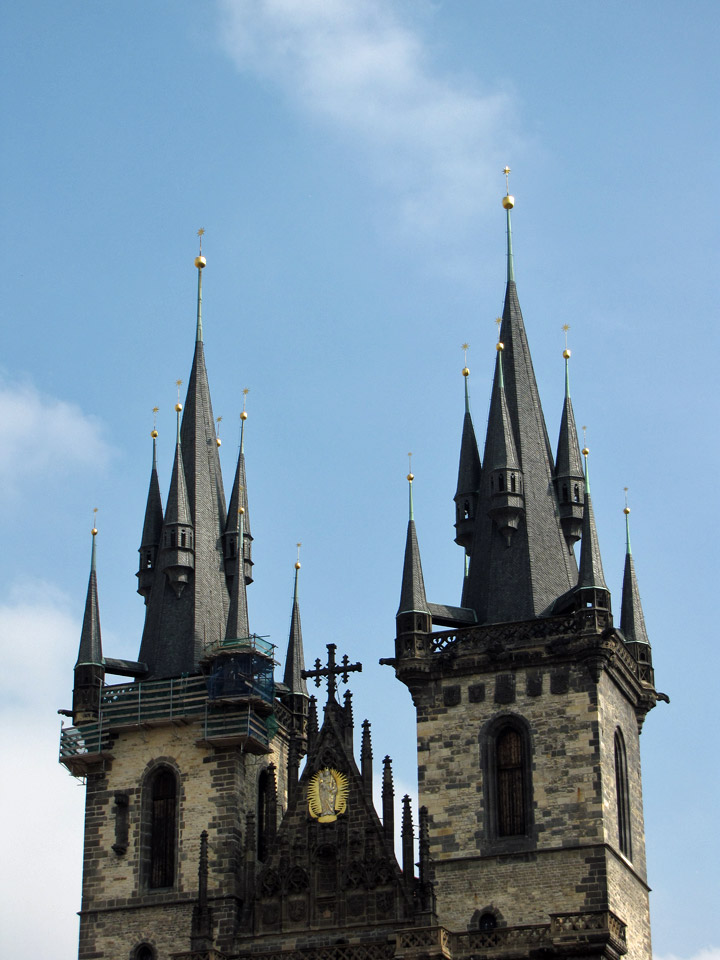
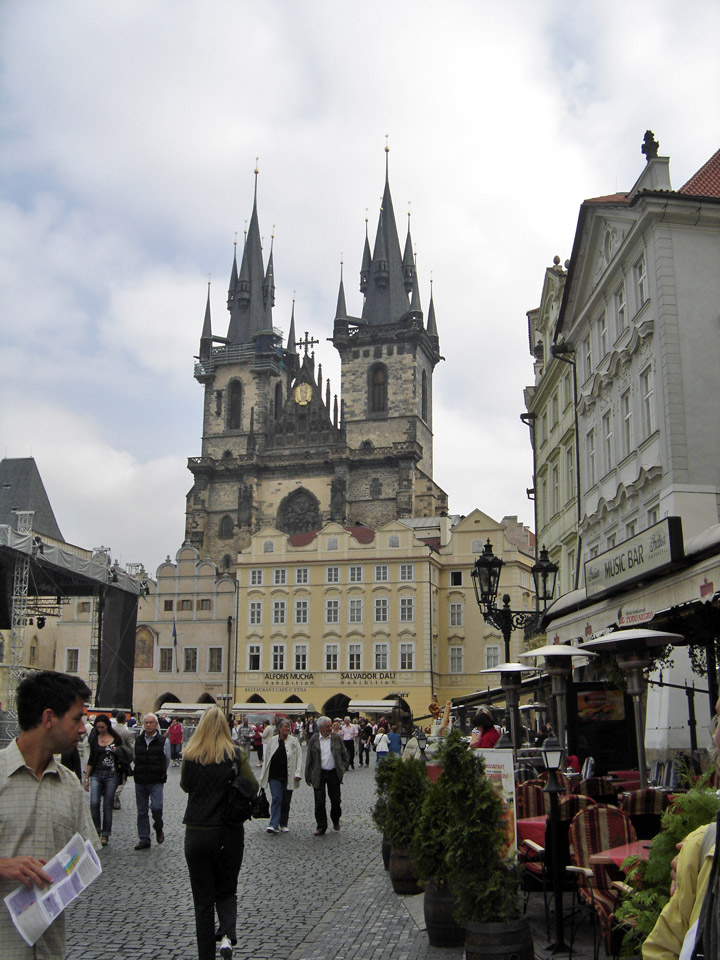
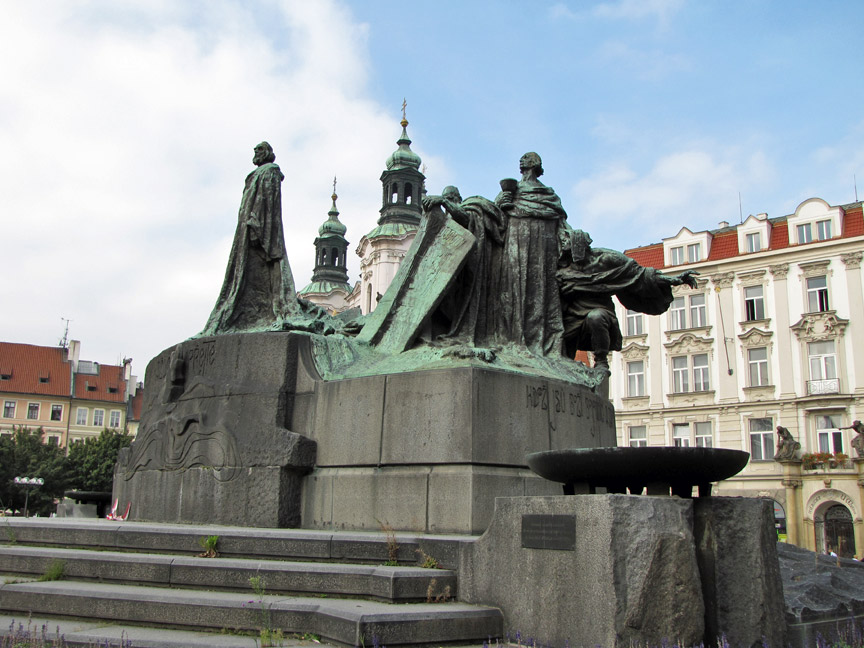
Jan Hus Memorial
The Jan Hus Memorial stands at one end of Old Town Square, Prague in the Czech Republic. The huge monument depicts victorious Hussite warriors and Protestants who were forced into exile 200 years after Hus and a young mother which symbolizes national rebirth. It was unveiled in 1915 to commemorate the 500th anniversary of Jan Hus martyrdom. The memorial was designed by Ladislav aloun and paid for solely by public donations. Born in 1370, Hus became an influential religious thinker, philosopher, and reformer in Prague. Hus believed that Catholic mass should be given in the vernacular, or local language, rather than in Latin as well as many teachings of John Wycliffe. This did not go over well with the Vatican in Rome and Huss was ultimately condemned by the Council of Constance and burned at the stake in 1415.
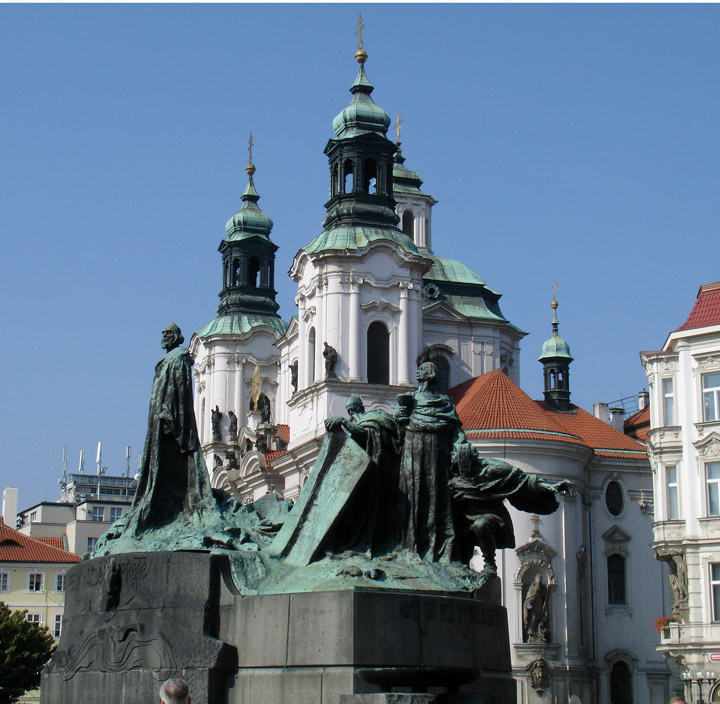
The people of Bohemia and other regions around Prague were constantly under
oppressive regimes. Jan Hus became a symbol of dissidence and a symbol of
strength against oppressive regimes. His opposition to church control by the
Vatican gave strength to those who opposed control of Czech lands by the
Habsburgs in the 19th century, and Hus soon became a symbol of anti-Habsburg
rule. When the statue was erected in 1915 during World War I, the memorial
became a symbol of anti-Russian rule. A couple decades later when Czechoslovakia
was under Communist rule, sitting at the feet of the Jan Hus memorial became a
way of quietly expressing their opinion and opposition against the Communist
rule.
Text from Wikipedia
